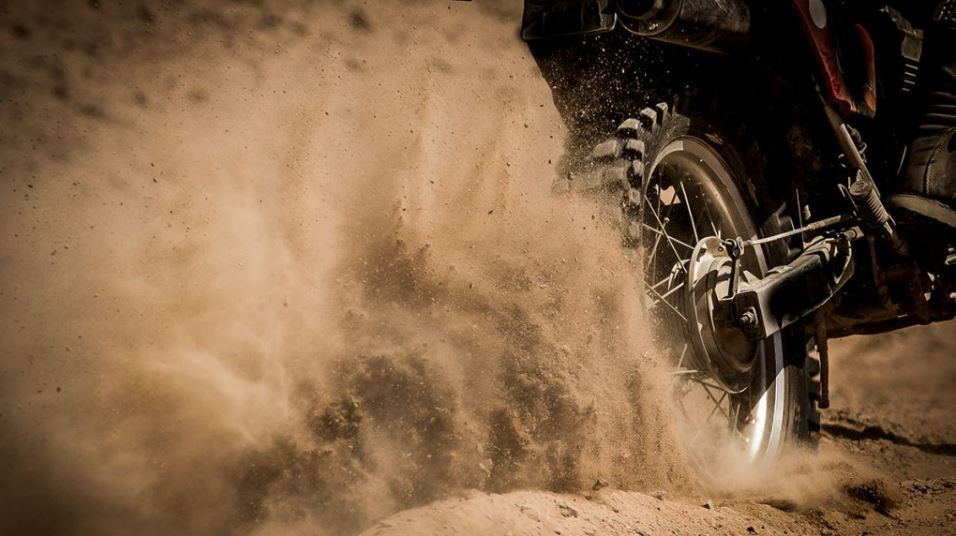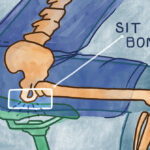For dirt bike enthusiasts and professional racers alike, the roar of a 4-stroke engine is synonymous with power and performance. Particularly in the competitive world of motocross and supercross, a 450cc four-stroke dirt bike, such as the Honda CRF450R or Kawasaki KX450, stands as the machine of choice. These engines deliver a unique blend of power and torque that caters to the demands of challenging terrains and high-stakes races.
The Power and Torque Advantage of 4-Stroke Engines
What sets 4-stroke dirt bike engines apart is their ability to generate substantial power and torque from relatively compact engine sizes. Torque, often described as “stump-pulling” force, is especially prominent in 4-stroke designs. This characteristic allows riders to achieve impressive feats, such as clearing significant jumps with shorter run-ups. Imagine a professional rider launching a complicated triple jump with a mere ten-foot approach – this is a testament to the robust torque that a 4-stroke dirt bike engine provides.
This power delivery is rooted in the engine’s design and combustion cycle. A 4-stroke engine completes its combustion cycle in four distinct strokes of the piston (intake, compression, power, and exhaust), requiring two full rotations of the crankshaft. This process, while seemingly more complex than a 2-stroke, contributes to a more controlled and broader powerband, particularly at lower and mid-range RPMs, resulting in higher torque.
While 450cc models represent the pinnacle of 4-stroke power, 250cc 4-stroke dirt bikes also enjoy considerable popularity. These smaller displacement engines offer a more manageable power output, making them excellent choices for weekend riders, beginners, and those who prioritize agility and ease of handling. The reduced weight and smoother power delivery of 250cc 4-strokes make them less intimidating and more forgiving, especially for riders still developing their skills.
Maintenance and Longevity Considerations for 4-Stroke Engines
The impressive power and torque of 4-stroke dirt bike engines come with a trade-off: increased maintenance demands. The very nature of their high-performance operation puts significant stress on engine components, necessitating more frequent servicing compared to their 2-stroke counterparts.
A typical 450cc four-stroke engine can produce around 50 horsepower from a unit that is physically comparable in size to a lawnmower engine. This high power output from a small displacement means components, especially the piston, endure considerable stress. When riders push these engines to their limits, revving them up to 10,000 RPM or higher on the track, intense heat is generated. This elevated heat can cause engine oil to degrade more rapidly. Oil sump temperatures can exceed 300°F (149°C), leading to thermal breakdown of the oil. When oil breaks down, it loses its crucial protective properties, increasing the risk of engine wear and potential damage.
 Two dirt bikes, one red and one blue, parked side by side on a dirt track, showcasing their knobby tires and suspension.
Two dirt bikes, one red and one blue, parked side by side on a dirt track, showcasing their knobby tires and suspension.
To mitigate these wear factors and maintain peak engine performance, manufacturers often recommend top-end engine rebuilds for 4-stroke dirt bikes approximately every 50 hours of operation. This routine maintenance can include replacing pistons, rings, valves, and valve springs, which can accumulate costs and time, especially for frequent riders. Understanding and adhering to these maintenance schedules is crucial for ensuring the longevity and reliability of a 4-stroke dirt bike engine.
4-Stroke vs. 2-Stroke Dirt Bikes: A Comparative Glance
While 4-stroke engines dominate the modern dirt bike scene, 2-stroke engines have a rich history and continue to hold a place in the market, experiencing a resurgence in recent years. Historically popular in the 1970s and 80s, 2-stroke engines are known for their impressive power-to-weight ratio.
The key difference lies in the engine cycle. A 2-stroke engine completes all four stages of combustion (intake, compression, power, and exhaust) within a single crankshaft revolution, as opposed to the two revolutions required by a 4-stroke. This fundamental difference in operation means that for each crankshaft rotation, a 2-stroke engine produces a power stroke, theoretically making twice the power of a 4-stroke of the same displacement, although in practice, this advantage manifests more as higher power at higher RPMs and a narrower powerband.
This efficient power delivery is why a 250cc 2-stroke engine can often rival or even exceed the peak horsepower of a 250cc 4-stroke. However, 2-strokes typically lack the low-end torque that 4-strokes excel at. Recent advancements in 2-stroke technology have focused on reducing emissions and enhancing power delivery, bridging the gap with 4-strokes in terms of user-friendliness. Furthermore, 2-stroke engines generally benefit from simpler designs, leading to lower maintenance requirements and costs compared to 4-strokes.
Choosing the Right Engine: 4-Stroke or 2-Stroke?
The decision between a 4-stroke and 2-stroke dirt bike engine ultimately depends on a rider’s individual needs, riding style, and experience level.
For professional racers or those aspiring to compete at a high level, the 4-stroke engine remains the preferred choice. The superior torque and broader powerband of 4-strokes provide a competitive edge in demanding race situations, offering better control and acceleration out of corners and over jumps. Hardcore riders who prioritize maximum power and torque, and who are prepared for the associated maintenance demands, will also find 4-strokes ideally suited to their needs.
For weekend warriors and beginners, the landscape is more nuanced. A modern 250cc 2-stroke offers a lighter, more agile package that can be easier to handle and maintain, while still providing plenty of power for recreational riding. Similarly, a 250cc 4-stroke presents a user-friendly option, being less expensive and more forgiving than its 450cc counterpart, making it an excellent stepping stone for riders progressing in the sport.
The Critical Role of High-Quality Oil in 4-Stroke Dirt Bike Engines
Regardless of whether you choose a 2-stroke or 4-stroke dirt bike, one aspect remains non-negotiable: the importance of using high-quality engine oil. This is particularly crucial for 4-stroke engines due to their demanding operating conditions.
In a 4-stroke dirt bike engine, typically only about a quart of oil is responsible for protecting vital engine components from wear. This thin film of oil is all that stands between the piston and cylinder wall, preventing scuffing and ensuring smooth operation. It also protects bearings from wear and premature failure. With oil sump temperatures reaching extreme levels, the oil must possess exceptional heat resistance and maintain its protective properties under intense stress.
AMSOIL Synthetic Dirt Bike Oil is engineered to meet these demanding requirements. Its advanced formulation provides superior friction durability, minimizing clutch slippage, fade, and chatter, ensuring consistent clutch feel during starts and maneuvers. For riders who opt for 2-stroke engines, AMSOIL DOMINATOR Synthetic 2-Stroke Racing Oil offers comparable high-performance protection. Choosing a premium synthetic oil is a proactive step in safeguarding your engine, maximizing performance, and extending the life of your dirt bike, whether it’s powered by a 4-stroke or 2-stroke engine.
Find your Local AMSOIL Distributor https://amsoil.co.in/where-to-buy/

